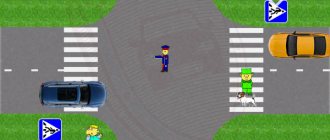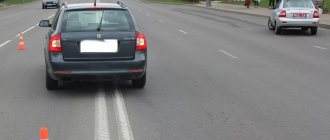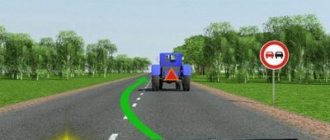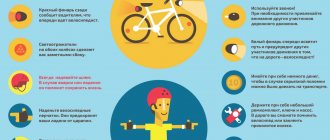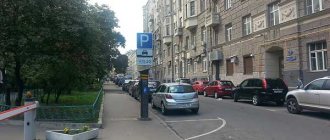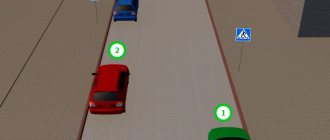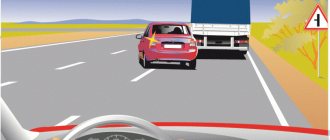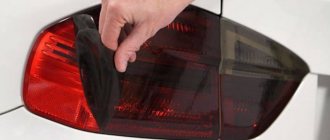Who is allowed to use private speed cameras and why?
Cameras can be installed by both individuals and organizations.
Equipment for reliable tracking of speed limit violators is expensive and requires regular maintenance. The benefits for government agencies and individual companies are mutual.
The company installs the equipment at its own expense, maintains it in proper condition and receives a percentage of each amount that the driver who violated the law pays as a fine.
There is always enough speeding on the roads, so there are quite a lot of people who want to make money from it.
This video will tell you why private companies install cameras to record traffic violations on the roads, and what benefits they get from it:
Types of cameras for photo/video recording of traffic violations
First of all, photo and video cameras need to be divided into the following groups:
- Cameras operating in automatic mode.
- Cameras used by traffic police officers when imposing fines.
Cameras for automatically recording traffic violations
The list of traffic violations that can be recorded automatically is not defined by law. Those. In theory, automatic cameras can record any violation of traffic rules.
In practice, cameras are able to record only some violations of the rules, but the list is constantly growing.
I note that cameras operating in automatic mode are divided into:
Portable cameras require daily installation and configuration by traffic police officers. In practice, such cameras only record violations related to speeding.
Stationary cameras are constantly located at the same place on the road (usually on a pole or other support). They only need to be configured once, after which they can detect the following violations:
- Over speed.
- Driving through a prohibiting traffic light.
- Exiting the stop line.
- Entering an intersection when there is a traffic jam.
- Drifting into the oncoming lane.
- Driving on the side of the road.
- Pass under the “No Entry” sign.
- Pass under the sign “Trucks are prohibited”.
- Entering the lane for route vehicles.
- Drive out onto the sidewalk.
- Truck traffic beyond the second lane on highways and roads for cars (MKAD).
- Violation of road marking requirements.
- Making a turn from the second row.
- Low beam headlights or daytime running lights are not turned on.
- Violation of toll rules for heavy trucks.
- Failure to give priority to pedestrians at pedestrian crossings.
Stationary cameras can monitor traffic simultaneously in several lanes, including oncoming lanes.
As technical means are constantly being improved, it is possible that cameras will appear that impose fines for other violations of the rules. If in practice you received an automatic fine that is not on this list, write about it in the comments to the article at the bottom of the page.
For example, the traffic police plans to teach automatic cameras to record a driver’s lack of compulsory motor liability insurance. Checking compulsory motor liability insurance using a single database is not so difficult, so practical implementation will not be long in coming.
Note. Automation of fines for lack of compulsory motor liability insurance has been discussed for several years, but currently (2019) cameras are not able to record this violation.
Mobile cameras are installed in state traffic police vehicles or in public transport. They record violations as these vehicles move.
Mobile cameras can record:
- Over speed.
- Violation of parking rules.
- Violation of toll rules for heavy trucks.
Cameras working together with traffic police officers
Let's move on to considering cameras working together with traffic police officers. In this case, cameras are an additional tool that allows you to confirm the driver’s guilt and impose a fine.
Such cameras can be used to record any violations of the rules . However, unlike automatic cameras, they do not send chain letters. Traffic police officers can only impose a fine manually.
There are several options for using cameras:
- The inspector has the camera. The inspector films the traffic violation on camera and then stops the car.
- The camera is with another inspector. A traffic police officer records a violation of the rules on camera, and then transmits the information to the nearest post. The driver is stopped at the checkpoint and fined.
- Stationary camera in front of the traffic police post. The stationary camera works automatically; it recognizes license plates of passing cars, checks them against databases and transmits information about possible violations to the post. A traffic police officer comes out, stops the car and conducts a check.
Attention! If a traffic police officer is involved in processing documents about a violation, then a fine is imposed as for a regular violation, and not as an automatic one. For example, a driver may lose his license for repeated speeding.
What needs to be done before starting such an activity?
To obtain the right to install video recording systems, submit information about speeding to authorities and receive income from this activity, individuals or organizations must win a tender from the state .
The municipality enters into an agreement with the applicant that beats out competitors for a period of 10 to 12 years, during which the contractor’s account will receive interest from the fines paid by the car owners.
An entrepreneur or organization will have to spend approximately a quarter of this period to recoup the costs of purchasing and placing equipment, as well as the costs of its maintenance and repair. But in the subsequent, longer period of time, receipts will form net profit.
The installation locations of such cameras must be approved by the traffic police.
After the end of the period specified in the agreement, the video surveillance systems will become the property of the state.
How reliable is information from private cameras?
Readings taken from private speed cameras are more likely to be erroneous than those taken from stationary equipment.
Reasons why private video data may be incorrect:
- Incorrect device settings . The owner of the device may specify an incorrect value for the allowed speed in the program. This can be either an accident or a special action aimed at increasing one’s own profit;
- Changing signs on the road . Changes in road symbols may occur suddenly, due to repairs or other situations that arise. The owner of a private camera does not always have time to receive or process this information on time.
If a person who has received a notice of a fine does not agree with the accusation, then he should contact a special automatic recording center, where he will be provided with a video recording made.
Types of equipment for fixing speed
Simple video recording devices cannot be used to monitor offenders. The devices must have many additional qualities, be certified and meet the necessary requirements.
There are two types of private speed cameras:
- Mobile complex . Basically, it is installed on tripods in locations approved by the traffic police. Tripods are placed in areas with the highest frequency of traffic accidents;
- Mobile cameras . Such gadgets are attached to the car, removing various violations while driving on the roads.
Portable cameras on a tripod include:
- Photo radar unit;
- Tripod;
- Battery part;
- Cable for connecting to the charger;
- Navigation module.
At the selected tracking point, the main unit is placed on a tripod and connected to the charging box, the energy of which should be enough for a day.
Important components of the main block:
- Multipurpose radar;
- High resolution camera;
- Infrared illumination.
The photoradar sensor records several important parameters:
- Vehicle speed;
- Coordinates of the car in space;
- Fixation time.
Additionally, the package includes a powerful industrial computer, as well as other elements.
What types of fixation are there?
Most often, traffic police fines come from cameras when violations are recorded on stationary cameras. These are installed on poles and other supporting structures at the sides of transport arteries and monitor roads around the clock.
Different complexes have different technical characteristics, “farsightedness,” maximum fixation speed and a list of types of violations that they are ready to track.
In addition to them, portable video recording systems are used that “read” only speeding. Along with them, mobile traffic police cameras can also be used - in 2021 they will be installed on patrol cars and public transport. They see not only violations of the speed limit, but also non-compliance with parking rules, passage of heavy equipment and a number of other traffic violations.
And in some regions, the police have even begun to use drones and balloons, but this is more of an experiment than a rule. Let's take a closer look at the main video recording systems.
How much will it cost to purchase equipment?
Most of the time, many vehicles pass by the recording cameras, not in a line, but in two or three lanes of multidirectional traffic.
For tracking to make sense, the camera must take very high-quality images, take photographs and recognize registration plates of cars, and the sensor must register the parameters of all passing cars.
At night and in the evening, the shooting area is scanned by an infrared spotlight, because in the dark there are plenty of people who like to “drive”.
It is not surprising that such mobile video surveillance systems are not cheap. The price can vary from one and a half million rubles to two or more .
Mobile video recorders are small-sized devices that can be attached to the front panel of a car. The package often includes a removable handle, with which you can shoot manually while getting out of the car. It is possible to mount the device on a photo tripod.
This compact video recorder may include:
- Measuring unit;
- Lever;
- Remote controller;
- Batteries;
- Stylus;
- Memory card;
- Power cable;
- Network adapter;
- Mounting bracket.
A mobile device for fixing speed takes pictures in two plans: general and close-up. The latter is needed to determine the vehicle number. If you exceed the speed limit, recording will automatically start.
The equipment must have high sensitivity to operate functionally during twilight, but may not have the infrared flash of full portable systems. The cost of such a camera is around three hundred to five hundred thousand rubles .
Portable tripods are more accurate and provide more reliable readings, but they are often subject to vandalism. If you do not take proper protective measures, such a business will quickly become unprofitable.
There is less risk in working with mobile cameras, but the reliability of their readings is significantly inferior to mobile systems.
Time-tested complexes
Perhaps the most common traffic police video camera on Russian roads is the Strelka ST. She can do the following:
- sees speed limit violators,
- controls traffic in the oncoming lane,
- on the side of the road,
- dedicated lane for public transport,
- crossing the stop line,
- movement of trucks in prohibited places and other violations.
The “vision range” of the camera exceeds 500 m. At this distance, it “catches” the violator in the traffic, “leads” him until he approaches a distance of 50 m, after which he records the violator and his license plate number using a camera. The downside of this system is that it does not respond to objects moving at speeds exceeding 180 km/h.
AvtoUragan-VSM2
This is not just a camera - it is a whole system that combines several photo-video recording complexes, which has a common time synchronization based on a signal from GLONASS/GPS. These traffic police cameras can record 17 types of traffic violations, including:
- over speed,
- driving on red,
- leaving the stop line,
- driving under a prohibiting sign,
- riding on tram tracks,
- sidewalks and bike paths.
The cameras see up to 4 road lanes, record objects at speeds of up to 255 km/h and provide accuracy with an error of no more than 2 km/h.
Autonomous stationary complex consisting of several cameras. It has 12 types of violations that it can capture, including:
- over speed,
- passing a prohibitory signal,
- driving into the oncoming lane,
- turning left or making a U-turn in violation of the markings,
- driving in the opposite direction on a one-way road, and so on.
The camera was created by TCOBDD LLC and reacts to objects moving at speeds of up to 250 km/h. The estimated error is ±1 km/h, the range of operation is classified by the manufacturer. In addition to recording traffic rules, the complex checks license plates for their presence in databases, for example, on the wanted list.
Krechet-SM, SKAT, SKAT-RIF, SKAT-PP
A series of cameras produced by Olvia LLC. Each of them has exceptional specific features. For example, KRECHET-SM provides continuous control with photo recording of all vehicles, SKAT can be used as a stationary or mobile fixing complex, SKAT-RIF works on the same principle as Avtodoriya, providing a mathematical calculation of the speed of movement.
Krechet sees intruders in the range of 10-100 m, SKAT in the range of 5-50 m, and for SKAT-RIF such a range does not matter at all. Any of the systems recognizes violators if they move within 250 km/h.
This complex is designed primarily to identify violators of stopping and parking rules. Parkon-S includes several PTZ street cameras controlled from a single center. Today you can find these funds on the maps of most Russian cities.
The system records cars parked in a given area and sends information about them to a single center: two photos with the date and time, license plate number, location and other information. Sees violators both on his own and on the opposite side of the road.
VOCORD Traffic
The VOCORD Traffic system is capable of recording 15 types of violations, including:
- speed limit violation;
- violation of intersection crossing rules;
- intersection of solid lines;
- violation of parking and stopping rules;
- violation in the pedestrian crossing area, etc.
The complex can include various components and measure speed using both detectors (up to 300 km/h) and optics (up to 250 km/h). The developers claim that the system is not recognized by radar detectors, provides 97% reliability of license plate recognition and passes less than 2% of total traffic.

